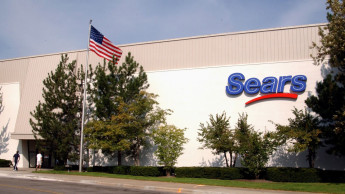In its mall locations the company was the most powerful seller of appliances and tools under the private-brand trade names of Kenmore for appliances and Craftsman for hand and power tools, garden equipment and automotive supplies. But the situation started to change dramatically more than 20 years ago, as the company came under attack from mass merchants like Wal-Mart, Target, Home Depot and Lowe's.
Sears never worked with low margins, preferring to offer goods that were considered high quality under the motto “satisfaction guaranteed”. Its Craftsman tools, for example, came with a lifetime warranty. However, its retail prices reflected the cost of the expensive mall locations. Sears drastically reduced the prices of the products in its weekly advertising promotions, though always from a rather substantial base. It was unable to compete with the gross margins promoted by Wal-Mart and Home Depot, which were operating at well below 30 per cent. The result of course being that customers began to see Sears as expensive. Male customers turned increasingly to local hardware shops or the big DIY chains. And female customers had the choice of more than half-a-dozen style-oriented chains such as Gap.
In fact, Sears' attempt in 2005 to replace branded clothing with private-label lines resulted in a 14 per cent decline in sales.
Over the past decade Sears has tried out numerous new ventures, most of which have proved unsuccessful. Within the last five years it has tested some large stand-alone stores called The Great Indoors. Then came Sears Grand, a concept that envisages giant stand-alone stores à la Target which, like The Great Indoors, was not particularly successful, though some locations have survived.
This was later followed by a smaller format called Sears Essentials, which proved to be a complete failure. The stores were closed or converted to the Sears Grand concept.
Earlier on came the opening of Sears Hardware stores of 1 500 m² to 2 000 m² in size, built on the strengths of the Craftsman, Weatherbeater and Easy Living private-label brands and designed to bring its hardware products closer to the company's male customers. But these units lacked any excitement or merchandising flair, so that dozens have been closed over the last few years. Finally came the attempt to bring appliances into the surviving units in an attempt to rejuvenate sales. Today major appliances form the focal point of 40 per cent of the Sears Hardware stores, and space for typical hardware products such as electrical and plumbing lines has shrunk correspondingly, so that today they scarcely pose any threat to independent hardware stores or the giant DIY centres.
Some years ago Sears purchased Orchard Supply Hardware, a very successful California-based chain of large hardware stores, but it has not succeeded in transferring the concept to the Midwest.
All these problems gradually began to erode the company's market share over the past two decades, long before Edward S. Lampert, a hedge fund manager and the main investor in Sears Holding, assumed control as chairman and began to impose his own views and management concepts on the company.
His actions seem amazing to other retailers and certainly to retail analysts. He is wringing hundreds of millions of dollars in savings from the combined Kmart-Sears company, which most industry experts contend is impairing its competitive strengths.
For example, in the major appliance business Sears has recently been overtaken by Home Depot, which now holds a market share of around 9 per cent, while Sears' fell about 8 per cent last year.
If cuts continue, it is feared that the three big brands, Craftsman, Kenmore and Land's End, which retail experts estimate comprise more than 20 per cent of company revenue, will become no more than faded memories. Added to this are still more problems: the Sears mall locations are no longer as prime as they once were, and the majority of Kmart stores are in need of renovation, which calls for a considerable amount of investment.
Even though profitability has improved under Lampert's management as a result of the cost-cutting, same-store sales are continuing to decline - an alarm signal for any retailer.
While it is true that Sears Holding was able to increase earnings by 83 per cent in the second quarter of 2006 (partly as the result of winning court cases), same-store sales at Sears saw a considerable decline of 6.3 per cent and Kmart remained 0.6 per cent below last year's level. Overall sales for the quarter amounted to US $ 12.8 bn.
Lampert may have succeeded in increasing earnings, but at what cost? Marketing expenses are being curtailed, and necessary investments in the retail channels omitted. Lampert, without the slightest amount of retailing experience, now controls merchandising at Sears. His personal okay will have to be obtained before taking up any new product line, which may well lead to a lack of new and attractive products in the range.
Major changes are needed, according to retail analysts, but Lampert seems to believe that he can continue to increase profits simply by reducing expenses.

 Menü
Menü
















